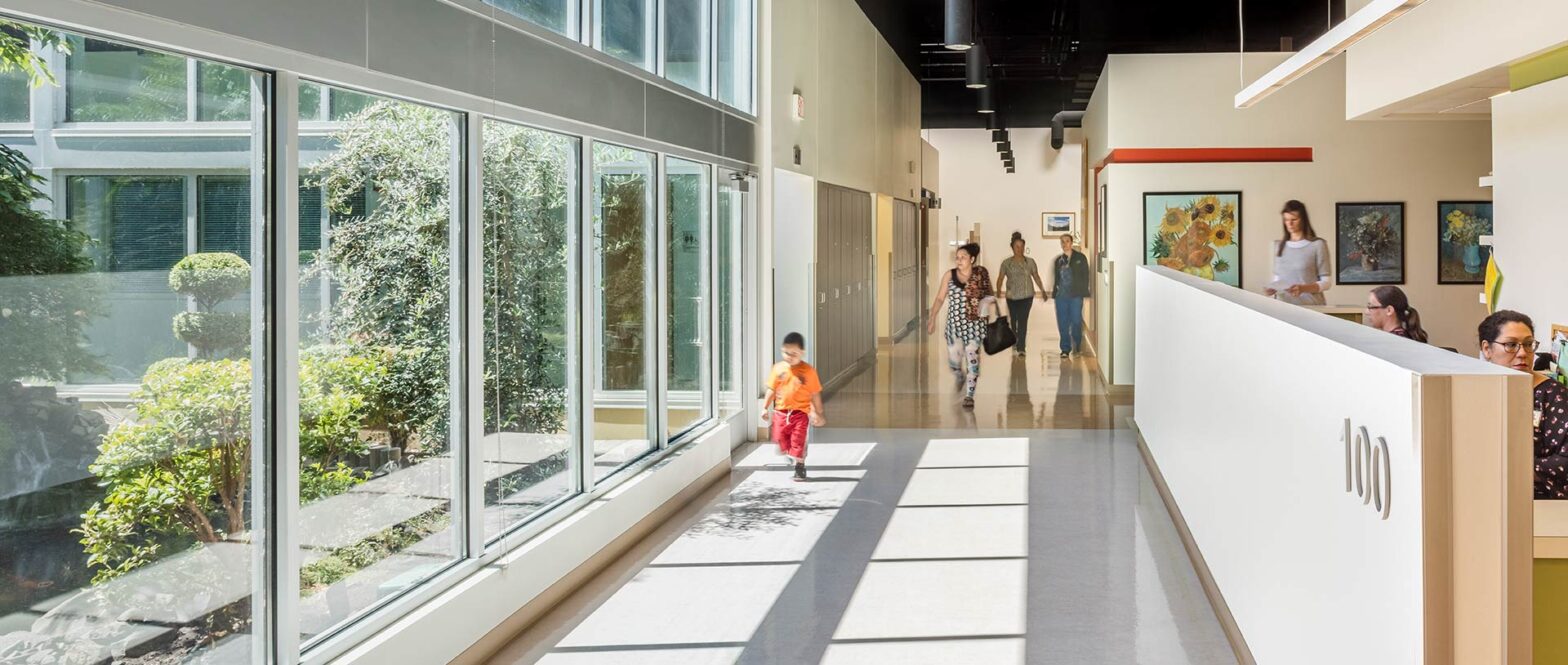Q: How can we make healthcare more convenient, accessible, and affordable, while at the same time helping to fill up the growing inventory of large vacant buildings around the country?
A: By taking healthcare out of the most expensive buildings—hospitals–and placing it in lower-cost structures in local communities, bringing care closer to populations.
The world around us is always changing, and as healthcare experts, clients depend on our help to maximize every opportunity with creative solutions. For example, it wasn’t all that long ago that Toys R Us, Kmart, Sears, and other big box stores were popular consumer destinations. Now that retail sales are moving towards clicks rather than bricks, the U.S. real estate market is exploding with “for lease” or “for sale” signs on shuttered big box stores with lots of square footage available at competitive rates.
Reusing abandoned big box stores for healthcare facilities is not an entirely new idea. In fact, we worked on two early examples of this approach:
- Wellspring Medical Center for Extraordinary Living transformed an empty Kmart building, bringing Silverton Health’s doctors close to its patients in the community of Woodburn, Oregon
- Located in a former Circuit City store In Salem, Oregon, Willamette Family Medical Center is home to a growing not-for-profit physician group’s practice
While architects may cringe when faced with the vast banality of an empty big box store, there are some positive aspects to this building type to consider:
- They are typically located in prime locations for retail—on major streets with great visibility, easily accessible by car and often served by public transportation
- They are relatively inexpensive for clients to lease or buy based on square footage and location
- Construction is simple, making these buildings economical to remodel
- They have broad footprints and high roof structures, offering flexibility for reuse
- Due to the size of a typical big box structure, clients may generate additional income by sub-leasing part of the space to complementary tenant suites
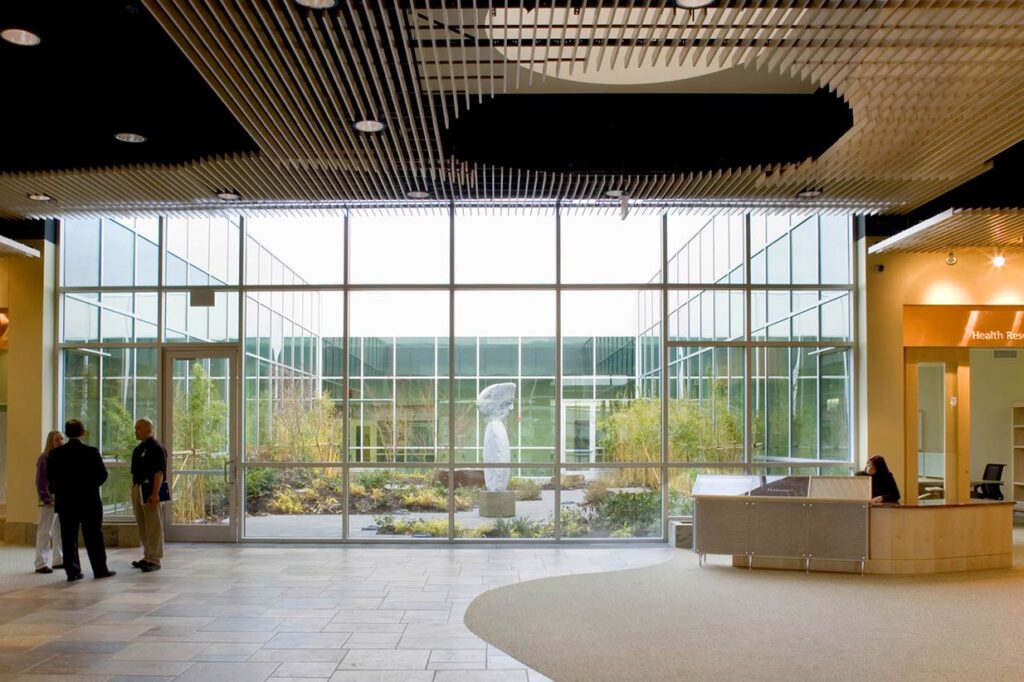
Interior Entry/Commons
Opportunities abound for creative design approaches to transform abandoned big box stores into positive spaces for healthcare patients, practitioners, and staff. Following are some of the transformative design strategies that we have successfully used for our health care clients:
- Landscaping: Creating a welcoming entry sequence so that a sense of nurturing begins upon patient arrival to the site
- Architectural Additions: Adding elements (projecting glass canopies, screen walls, warm materials and colors) to break the box form, make building entries more welcoming, and add human scale
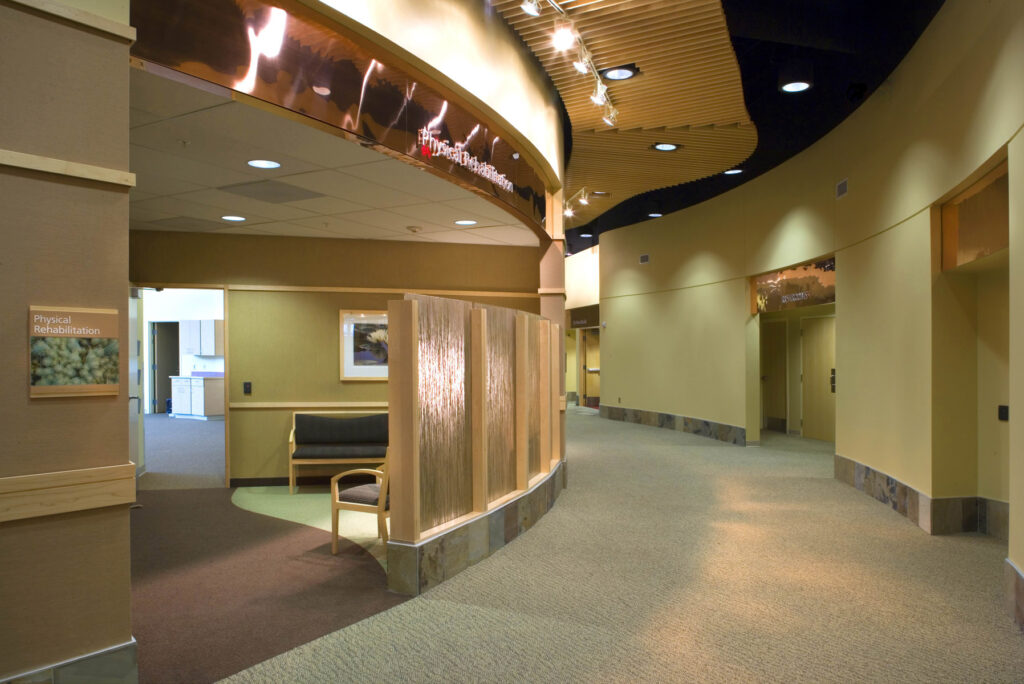
Physical Therapy Waiting Area and Commons
- Natural Materials: Setting a warm, lively and non-institutional tone with natural stone and wood for interior and exterior construction and finishes
- Daylighting: Cutting openings into the big box envelope for windows, wide entries, and internal gardens with glass walls for interior daylight and connection to the outdoors
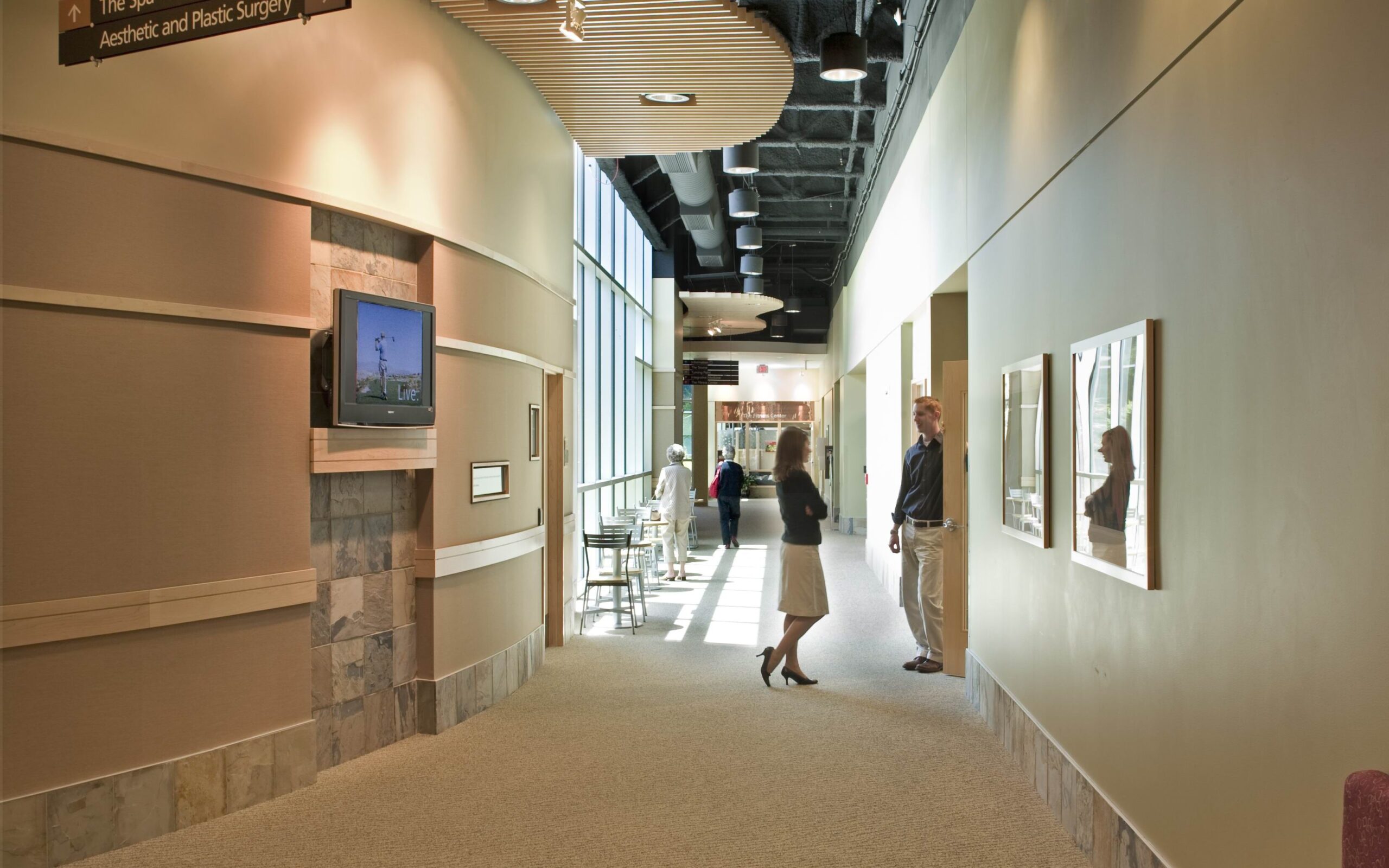
- Connections and Wayfinding: Planning clear interior pathways to provide access to all services for patients and to accommodate future remodeling ease
- Patient Pavilions: Designing patient care areas as “pavilions” within the high space to preserve the building’s open feel, creating lively centers of activity within the large space
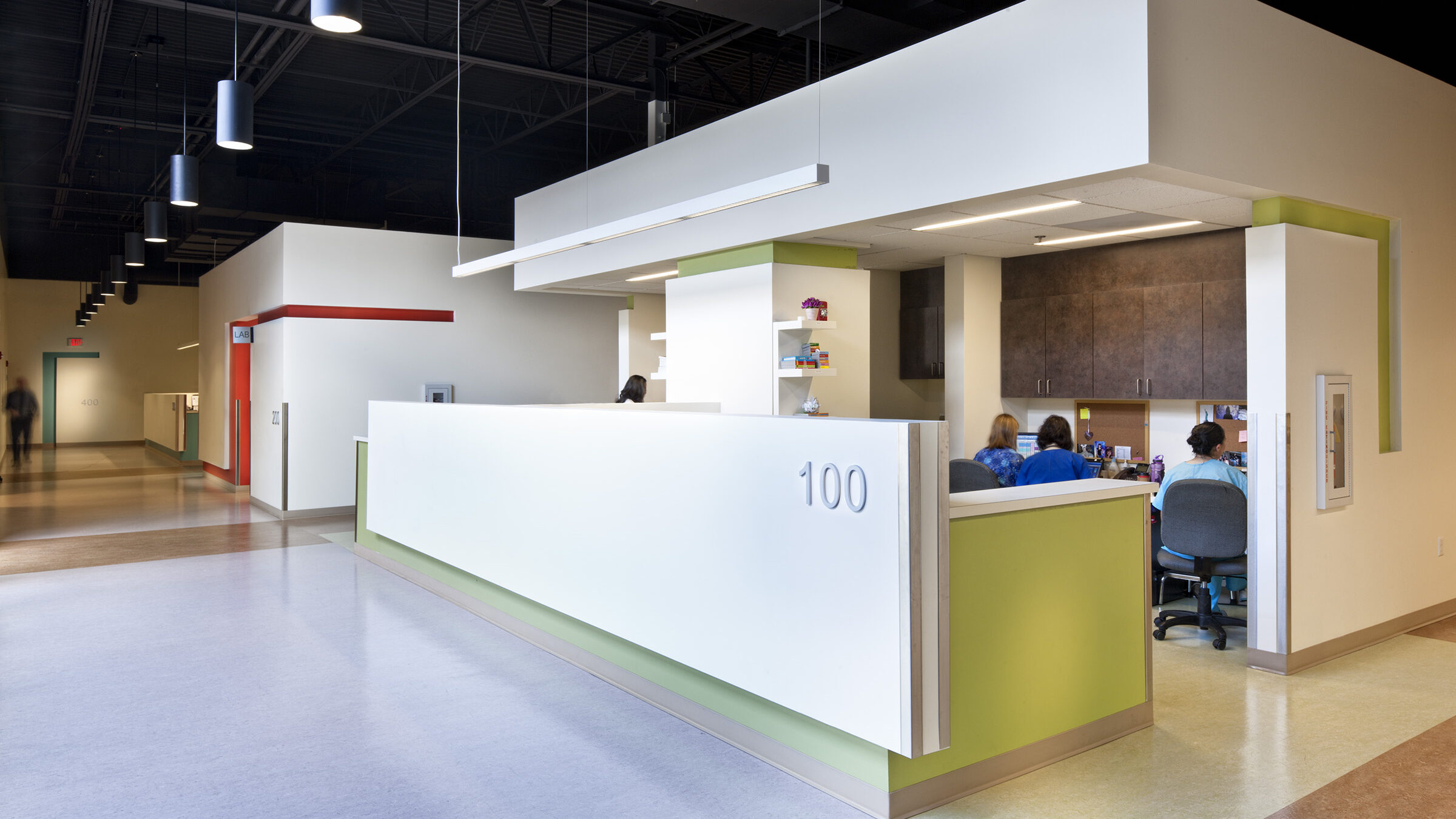
- Focal Points: Selectively use color, special features such as fireplaces or seating nooks, and suspended ceilings to provide focal points within the large structure
- Life Safety Improvements: Fireproofing the steel structure to allow for hospital-grade functions, such as ambulatory surgery centers, when needed
- HVAC Reuse: Evaluating existing HVAC units for potential reuse for routine outpatient services, and concealing unsightly infrastructure with paint, dropped ceilings and other visual elements
Over the last few years, both of the clients and projects cited in this article have gone through multiple changes in programs and services. These repurposed big box stores have easily proven their high level of adaptability to support the constantly evolving needs of these visionary healthcare providers.

